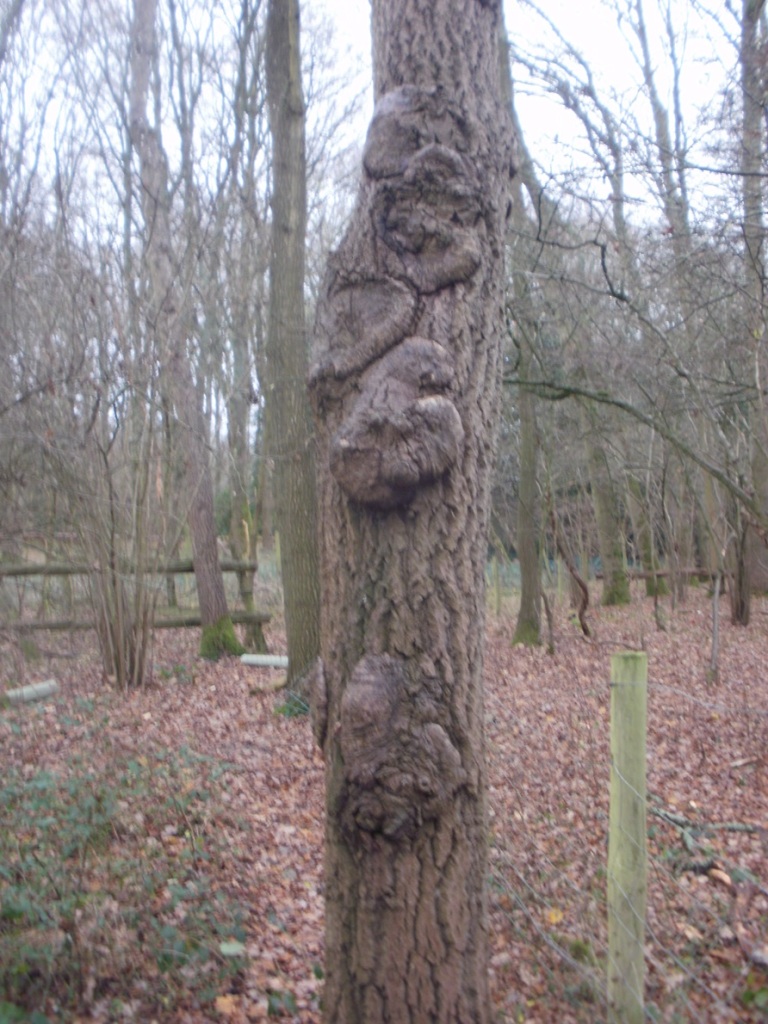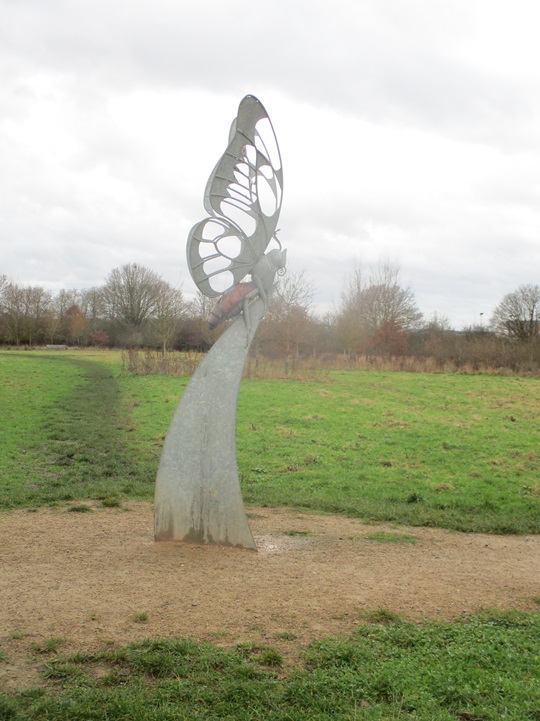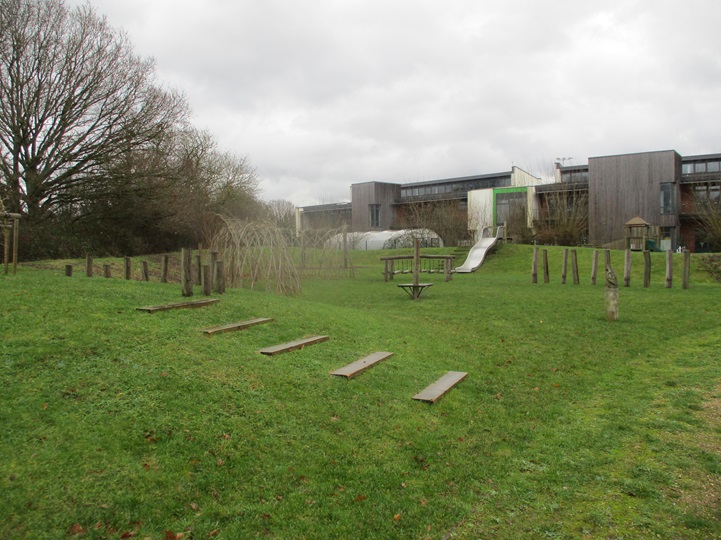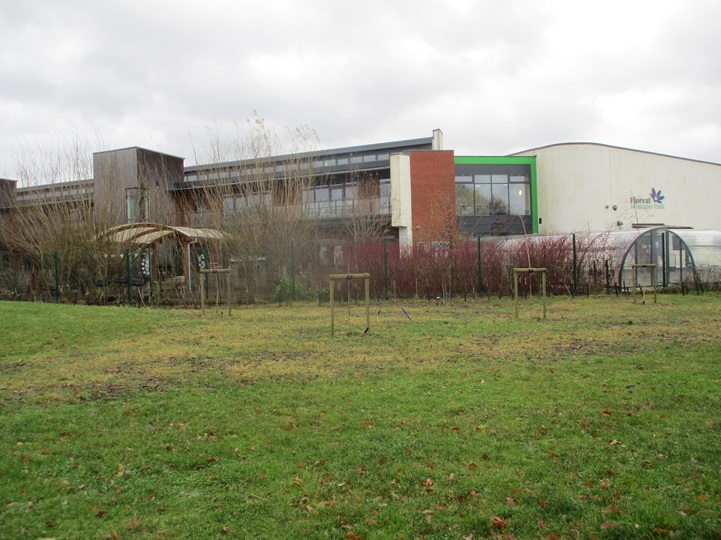A morning of reminiscing for Mr Hg137 who used to live about a mile or so from Buckhurst Meadow, on the outskirts of Wokingham. Back then the area was known as Buckhurst Farm and in the late 90s, the area could have been made the stadium for Wokingham Town FC. Instead local residents complained, the football club move was vetoed, and an estate of 620 houses was built.
As well as the housing estate much of the farmland has been turned into a 30-acre country park ideal for walking around and of course geocaching!
Normally our diaries are quite busy on a Thursday, but today, a few days before Christmas, our bookings had been cancelled – do we need a better excuse to go geocaching ?
Well the weather could have been better ! A misty, murky day greeted us as we set out. The December rain had made much of the grass very wet, but the paths otherwise were more or less good. Occasionally we stepped away from the path to find a cache.
The first cache brought back memories of the first cache we found just 5 days previously. Tucked near a post, behind a bramble bush. Fortunately this time the bush was relatively easy to lean over, yielding us a quick find.


Most of the caches we were looking for were set by local cacher, Mikes54, who gives very specific hints. We were grateful of this at the next cache where we had to find a cache at the base of a tree – the hint made sure we looked at the correct one from a choice of 4! We couldn’t grab this cache immediately as the tree was close to an intersection of footpaths, and a constant series of dogwalkers!
Fortunately our next cache took us away from the dog-friendly footpaths and into a hazel coppice. Here we had not only had to find a ‘knobbly tree’ but then count coppiced hazels to find the cache. We were grateful we hidden from prying eyes when we did this.


The Mikes54 caches had all been placed barely a month before our visit, but our next cache was much older having been placed in 2009. This was deep in area called ‘Big Wood’ which straddles the Wokingham and Bracknell boundary. We found some caches in the Bracknell side of Big Wood back in September 2022. The 2009 Wokingham cache was a quite easy find, albeit the GPS was 30 feet out. (We do find that the older the cache, the less accurate the GPS is – any ideas why ?)


We returned to Buckhurst Meadows and we should really have read the cache notes before we headed for cache 4 in the series. It advised, that after heavy rain, from cache 3 we should walk into the centre of the park via the central butterfly statue and take a different path to cache 4. We didn’t, and soon discovered the perimeter path was underwater. We waded through and around the puddle-cum-lake to arrive at a seat near Ground Zero. We gave a quick search for the cache but couldn’t find it. We saw a ‘cache-size hole’ at the front of a tree, and assumed the cache was missing. Then in the gloom, 300 yards away we saw a dog-walker approaching. Should we move on ? Continue searching ? The man turned away, and we resumed our search, and after few more minutes we had the cache in hand.


Our final cache in the Buckhurst Meadows series was closer to the car, so we took a path out of the meadows, passing a playground, a school and a pond. We arrived at Clay Lane – an enclosed wooded footpath Mr Hg137 remembered well as he sometimes walked their family dog there. Unsurprisingly, the lane had altered slightly in 40 years, many of the saplings had grown, the new estate provided less tree-cover on one side. On the other many of the gardens set back from the tree-line now had gates giving access to Clay Lane and Buckhurst Meadows.
In those intervening years, fairies have visited Clay Lane too. Their tiny houses nestled at the base of trees. We were admiring many of them… and walked by a cache. After walking a few yards, we retraced our steps, and after quite a lengthy search -found the cache. Another old cache as it placed in 2008!
We returned to Buckhurst Meadows and found the last cache snugly hidden behind a lifebuoy post, again near a junction of footpaths – so stealth was needed.
Close to Buckhurst Meadows were 2 more caches – both near the busy A329M. The first in a cul-de-sac that led to a hotel (in Mr Hg137’s time, the hotel was a nunnery!). The GPS wavered here but we soon found the tree the cache had been placed behind.


We crossed the A329 to find a most unusual cache called “It’s a Letterbox”. Letterbox caches, are named, after the ‘letterboxes’ found on Dartmoor. Geocaches of this type tend to have an ink stamp inside. The size of letterbox caches tends to be slightly larger than average, to accommodate the ink stamp, but the size of this cache caught us by surprise!
A highly unusual end, to a fun morning’s caching!

































































































































